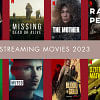How book to film adaptations fail because of pacing

Being disappointed with the film adaptation of a book you love is an integral part of a book lover's character arc. Film adaptations fail for multiple reasons, but a common problem is how they handle the story's pacing.
Let's start with an example of pacing handled right – the Harry Potter movies. The movies are relatively longer than your average film, but somehow sustain attention way better than films that are much shorter. And they needed to be long to properly bring to life the events of the books. Some scenes were slow and some were fast. The variety helped enhance the film. Props to the creators for their excellent job of translating the book's pacing into film format.
The Harry Potter films perfectly illustrate how much of an impact runtime has on an adaptation's success.
Tight run-times have killed so many stories with potential, like the Percy Jackson films. The movies skipped over essential world-building. Most of the plot holes could have been avoided if this issue did not exist.
The Divergent series had the same issue, although somewhat less blatant in terms of the world-building aspect. The character-focused parts of the book were run over by speedy action scenes which added neither depth nor intrigue to the movies.
Pacing problems don't just shoot down stories set in fantasy worlds. The Kite Runner, for example, was as close to reality as fiction gets. The movie scene where Hassan and Amir part ways was painful to watch. Although the dull acting played a huge role, the speed at which the scene flew by worsened it. Every emotion and nuance from the book was wiped off. In emotion-centric genres, pacing is the crux. That is why many good horror films have long runtimes to build suspense and fear and end up delivering satisfying payoffs.
We need to care about the characters to be scared of what will happen to them. We also need to know enough about the setting to want to know more about the story and how it unfolds. However, film creators seem to disregard this aspect when adapting books, especially the ones from the romance genre. It takes time for the audience to care, love, and root for the characters.
In the film adaptation of Six Feet Apart, watchers were thrown into the story without being given a reason to care for the main character. We meet the second lead character before we have time to love or grow interested in the first. The journey of the two characters felt like the third ride on a roller-coaster; the story was constantly moving but we still felt nothing.
Six Feet Apart is not alone. Many romance book adaptations feel like a series of interactions because the movies did not allow time for the characters to truly shine.
Pacing affects the structure of storytelling. Half-hearted attempts from the film producers' side have definitely strengthened book lovers' suspicions that book-to-film adaptations are usually made for profit, not for the love of the source material.
Give Zaheen tips on not being emotionally attached to fictional characters at instagram.com/tasfiazuhair/

 For all latest news, follow The Daily Star's Google News channel.
For all latest news, follow The Daily Star's Google News channel. 








Comments